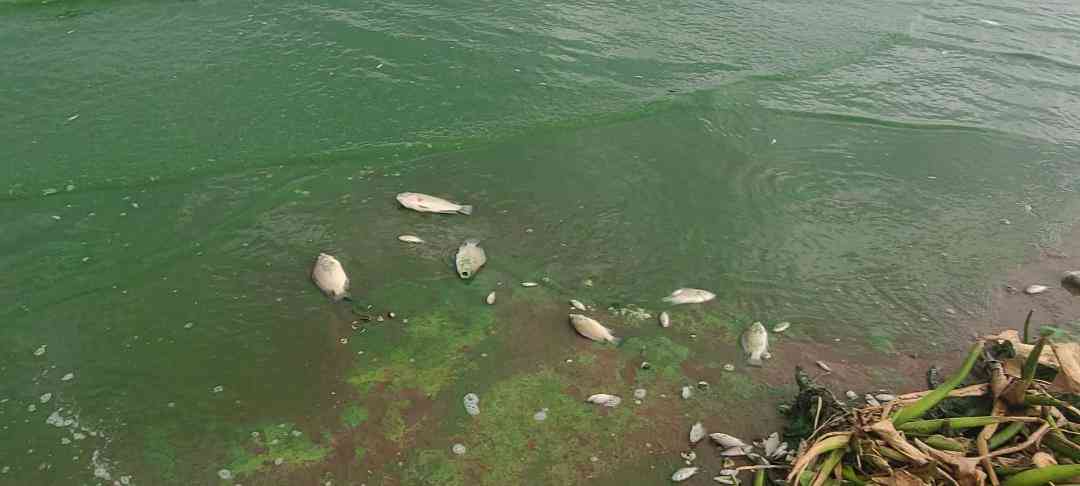
As the engine of an antiquated boutique cruise ship sputters off Kuimba Shiri bird sanctuary shores into the 2 632-hectare Lake Chivero on a sunny winter afternoon, a discussion about the effects of pollution on the water body takes over and instantly dampens the excitement of passengers aboard.
Packed inside the vessel, legislators, Harare city officials and environmentalists ponder over the depressing details on how raw effluent mainly from the capital’s sewer systems and industries is responsible for the foul smell, opaque green water and virtually no sign of wildlife during the sightseeing exercise.
A sense of guilt creeps in and sustains a subtle accusation made by Zimbabwe National Parks and Wildlife Management Authority (ZimParks) senior terrestrial ecologist Diana Marewangepo at Kuimba Shiri, prior to the trip.
“After lunch when everyone is a bit full, we go into the details and tell you more about this beautiful place that unfortunately because of our activities is a bit threatened right now,” Marewangepo had told the delegation.
The massive pollution of Lake Chivero is killing wild animals and dimming the lustre of tourist attractions tied to the water source.
In December last year, ZimParks revealed that the lake’s waters were poisoned by cyanobacteria, a colossal pollution crisis that was also blamed for the deaths of rhinos, zebras, wildebeest, fish eagles and over a thousand fish in a few days.
“Pollution has been a recurring issue (at Chivero). It’s just that this time around, it was a different bacteria, the cyanobacteria and the last time it was one called clostridium,” Marewangepo explained.
“The difference is that clostridium can be treated so the measure that we took was vaccinating animals against it but now cyanobacteria has got no vaccination yet there are toxins that it produces.
- Lake Chivero pollution: A wildlife massacre that also claimed the pulse of Harare tourism
Keep Reading
According to her, extreme atmospheric conditions recorded at Chivero in the recent past are also good factors for cyanobacteria to proliferate.
“The only way is to clean up the lake. The other challenge is last year we did not get a lot of rain and that also contributed to why we had a very serious situation, because it was a combination of factors,” she said.
In an urgent response to the disastrous occurrence, ZimParks announced a ban on fishing activities at Lake Chivero until investigations are complete.
"The ban will not be lifted until the root cause of this pollution is comprehensively addressed by the three local authorities around that place, including Norton," Environment, Climate and Wildlife minister Evelyn Ndlovu told legislators recently.
As debate rages on how and when the lake can be cleaned and who will foot the huge bill, Kuimba Shiri has dragged Harare City Council to court over lost income owing to the continuous pollution.
Through a lawsuit filed at the High Court in July, Kuimba Shiri owners say the business has been ruined by the pollution of Lake Chivero, leading to massive financial losses.
Founded by Stafford in 1994, the tourism facility boasts of over 400 species of wild birds and by 2002 had established the largest collection of indigenous birds in Africa.
However, the court application states that the bird sanctuary made staggering losses of US$86 240, which it now wants to recover from Town House.
“I seek nothing but justice as a victim of environmental infringements and constitutional offences at respondent's instance,” read the court papers submitted by Stafford.
“I agree that there is need for a coordinated decisive response to mitigate the current situation and long term impact and consequences of this environmental crisis and hence I have decided to invite the court to make a finding on this fact and a ruling on the same.”
In addition to accusing the City of Harare of “gross negligence”, Stafford sought an order that would legally force the municipality to take urgent remedial action.
Close to a year after the Chivero disaster, there has not been notable progress towards restoring fresh water or reducing flow of raw sewage into the iconic lake established in 1952.
“These are heavy capital intensive projects that need not be funded from rates like we are currently doing now,” said Harare’s Environmental Management Unit head Lisben Chipfunde, to the chagrin of many on the boat cruise.
Funding from international lending institutions, which the city used to depend on in the past, has dried up and this has affected the sewage treatment works, says Chipfunde.
“It's a challenge that the local authorities themselves will not be able to deal with so we appeal, particularly to the policymakers, that are here. We need to relook at the funding mechanisms to be able to address the pollution challenges.”
While fingers are being pointed in all directions without a sustainable solution, Harare’s tourism has taken a huge hit due to massive poisoning of its waters.
Data from the 2024 Tourism Trends and Statistics Report shows that domestic and foreign visits into the Chivero national park fell by 23 percent from 21 142 visits in 2023 to 16 242 last year. The drop in tourists’ interest in the destination could be worse this year after the disaster.
This, ironically, at a time when entry into other game parks across the country grew ultimately earning the country a “Best Country to Visit in 2025” recognition by Forbes Magazine.
Steering the boat back to the bay at Kuimba Shiri, the bird sanctuary director Joshua Stafford had questions that would linger on the minds of many passengers for the rest of the day.
“By the end of this year when Lake Chivero water level is at about 30 percent, the fish will die again, it's going to be a big disaster,” he said.
“You know, we all talk about the loss of life of rhinos, of land animals but what about the fish? What about the cormorants, the bird life?
“They are suffocating, is that not terrible?”










